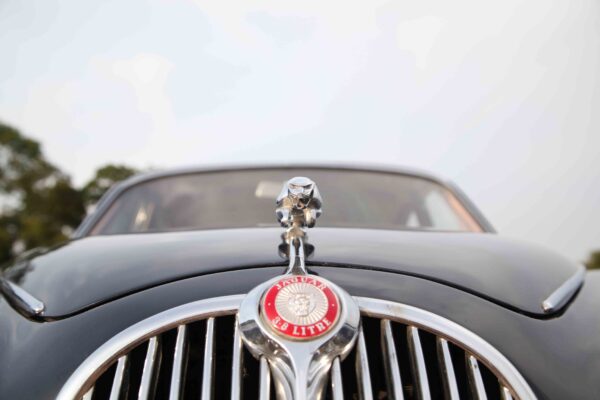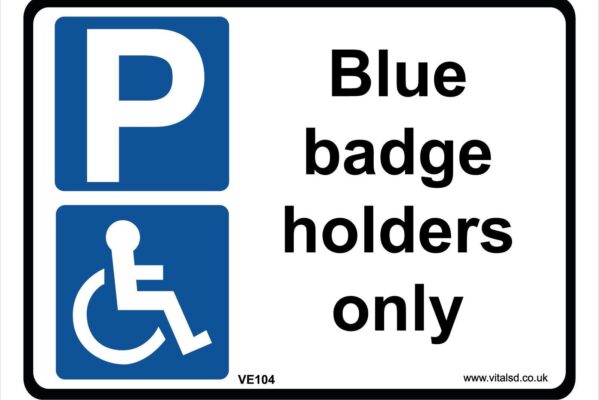What is the Blue Badge scheme?
A Blue Badge provides parking concessions for people with disabilities, allowing them (or whoever is driving with them) to park closer to shopping centres and other destinations. You can use the permit in any vehicle, as long as the badge holder is present (whether driving or being driven). It isn’t assigned to a specific vehicle.
The scheme (also known as the European Parking Badge Scheme) was introduced in April 2000 to help people who have severe difficulty walking by improving accessibility. As of March 2017, 2.38m Blue Badges are held in England.
Blue Badge eligibility
You are entitled to receive a Blue Badge if you’re registered as blind or receive any of the following benefits.
- The mobility component of Disability Living Allowance (DLA) at the higher rate (for under 65s).
- Personal Independence Payment (PIP)with a score of 8 or above in the ‘moving around’ section of the assessment (you’ll be asked to provide a duplicate of your entitlement letter with a date within the past 12 months).
- A lump-sum War Pensioners’ Mobility Supplement payment (at tariffs 1 to 8) after being certified as having a serious disability, which means you are unable to, or find it very difficult to, walk.
What if you aren’t automatically eligible?
You may also be eligible for a badge if:
- you have a permanent disability that means you have difficulty walking short distances (around 80 metres)
- you have a permanent disability that prevents you from using parking meters.
If this is the case, you or the person supporting you will need to fill in an extra part of the application form to demonstrate why you need the permit. It is necessary to support your application with a letter from your GP or consultant as evidence.
Use gov.uk’s Blue Badge eligibility checker to see whether you’ll be able to make an application.
If you have any further questions about eligibility, or you’d like to discuss an application in advance, you can contact your local council.
How to get a Blue Badge
You can either apply for your own Blue Badge, or a carer, member of the family or a friend can apply for a Blue Badge for another person.
There are three ways in which to submit your application.
- Online: through the gov.uk website’s Blue Badge application form.
- By post: in most cases your local authority will either send you the application form or provide you with a PDF file, which you can print out, fill in and return by post.
- By phone: although not all local authorities allow you to make a telephone application, so contact yours to check.
How to get a Blue Badge outside England
There are different rules for applications for Blue Badges in different parts of the UK. Please visit the following pages to find out more about applying in Scotland and Northern Ireland.
How much does a Blue Badge application cost?
In England and Northern Ireland, there’s a maximum charge of £10. In Scotland, it can cost up to £20 and in Wales it’s free.
Blue Badge holders in London can get full exemption from paying the congestion charge (although, there is a £10 administration fee for an application). For more information, check out the Transport for London’s discounts and exemptions page and scroll down to the ‘Blue Badge holders’ section.


How to fill in the form online
The application takes around 45 minutes to complete online. Be aware that the form will time out and you’ll lose your progress if you leave your computer for more than 30 minutes.
Make sure you have the following key documents and information to hand before you start your application:
- A recent utility bill or other proof of address
- A photograph or passport photo signed on the back (the photo used for your Blue Badge will usually need to match passport standards)
- Your driving license (if applicable)
- Your National Insurance number
- The details of your doctor’s surgery and the name of your GP (you may also need to provide confirmation that you’re happy for your local council to contact them)
- Identification – a passport, ID card, or birth or marriage certificate
- Supporting documentation confirming your receipt of the benefits listed in the ‘Blue Badge eligibility’ section on this page.
Use the guidance notes: local councils should be able to provide guidance notes to support your application. Many have PDF files available for download on their website and others incorporate them into the application itself. If you intend to apply by post and you can’t find the supporting information online, ask for the guidance notes when you request your application form.
Explain your situation confidently and honestly: when filling in the form, make sure to explain how difficult the situation really is for you. There is no need to minimize the challenges you face, and this approach will give you a better chance of having your application approved. Remember this has to reflect your ability on your worst days not your best ones.
If you get stuck, seek support: make sure you check the Blue Badge section of your local council’s website and, if you still can’t find the information you need, contact your local council directly for assistance.
Use the gov.uk website to find your local council and social services.
Record your tracking reference number which you will receive once you have filled in the online form. If you make a telephone or postal application, you will need to contact your local authority by phone to obtain it. Make a note of this tracking number, as you may need to refer to it later in the process.
How to edit or cancel your Blue Badge application
If you need to make any changes to your online application, or you want to cancel it, you can return to your saved Blue Badge application on the gov.uk website. You will need the tracking reference number to log in and make changes.
Blue Badge tracking
You can track the progress of your Blue Badge application on the gov.uk website. Again, you’ll need your tracking reference number to log in and see what stage your application is at.
After you have applied
It typically takes four to eight weeks for a Blue Badge application to be processed and for a decision to be made, at which point you’ll receive a letter confirming and explaining the decision.
At this stage, the council may ask you to provide extra information, take part in a mobility assessment or meet with someone from the council to discuss your application.
It typically takes four to eight weeks for a Blue Badge application to be processed and for a decision to be made.
If your application is successful, you’ll need to pay (depending on which country you live in – see the Blue Badge Application section above for more information). Once payment is made, it usually takes five to 10 working days for your badge to arrive.
What to do if your application is refused
You can dispute the decision. The council will provide you with a ‘decision letter’ detailing why your application was denied. You will need to respond, explaining why you think the reasons for denying your application are incorrect.
Sometimes, an application can be denied because you didn’t provide enough detail, or the application didn’t emphasise the severity of the challenges you face – in which case, this is the perfect opportunity to set the record straight.
You can complain to your local council if you feel that your application has been dismissed unfairly. If you aren’t happy with its response to your complaint, you can contact the Local Government & Social Care Ombudsman.
Blue Badge renewal
Your Blue Badge will be valid for a maximum of three years (unless you receive the mobility component of Disability Living Allowance at the higher rate, in which case it can be issued to cover a shorter period). You’ll need to apply for a renewal around six to eight weeks before the badge expires to allow time for processing.
If your circumstances have changed you must inform them.
The process of renewing a Blue Badge is very similar to the initial application process.
You can renew your Blue Badge online, or simply print out, fill in and return an application form by post (see the ‘How to get a Blue Badge’ section above for more information).
For a renewal, you’ll need to have the information printed on the front of your current Blue Badge handy, including the long ID number, the expiry date and the name of the local council. This is in addition to the key documents mentioned above.
If your Blue Badge renewal is refused, follow the same process outlined in ‘What to do if your application is refused’ above.
If your circumstances change and your mobility improves you must inform them.
Sources-
www.gov.uk
Which magazine

